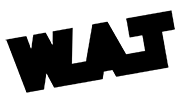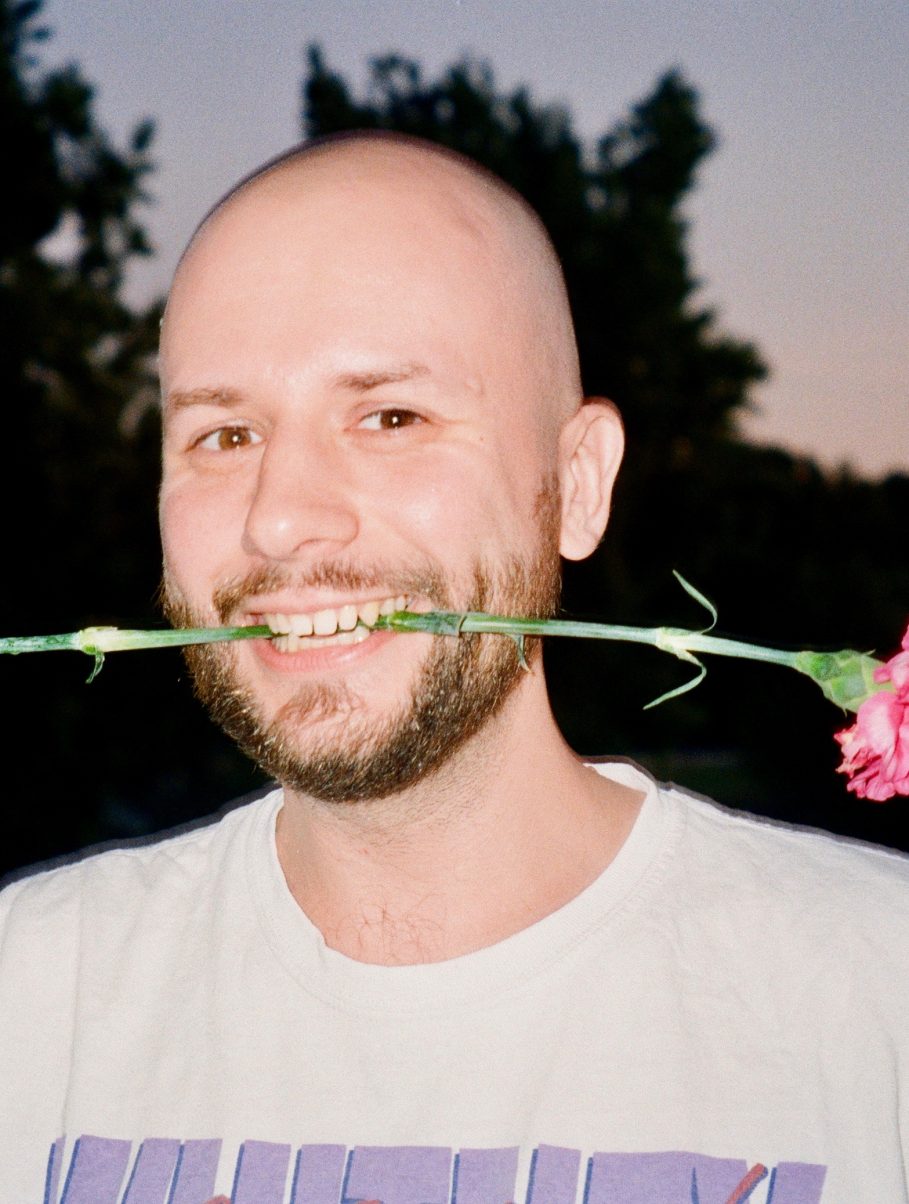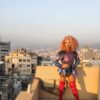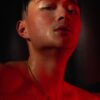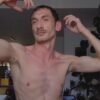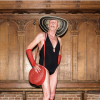Portrait of Anton by @francefung on Instagram
Ukrainian photographer Anton Shebetko, pictured above, knows how to take a beating – and turn it into art.
Words by Caspar Pisters, photos courtesy of Anton Shebetko
Initially the title of this interview was going to be: ‘Photographer ANTON SHEBETKO likes to take funny pictures of you to please himself’. He hated it but agreed to let me use it anyways. You would have clicked, dear reader, wouldn’t you?
However, in the meantime Anton pretty much emptied out the Instagram profile that the title referred to, which consisted of hundreds of photos of semi-nude guys having the hell flashed out of them with Anton’s digital camera. Cheerful, energetic and sexy compositions.
Asked what he was looking for in his pictures he replied it’s about challenging and deconstructing the “toxic hyper masculine imagery” that is so very prevalent in the gay community.
Anton: “I like my photos to be funny, inject some stupidity. Probably it is some kind of reflection of myself – I consider myself a funny person. I try to make pictures that will surprise me in the first place. I do it for pleasing me, and then it’s nice if other people like it, too. Even better if it helps opening them up to a different presentation of body and sexuality. That’s what’s important to me.”
(Text continues)
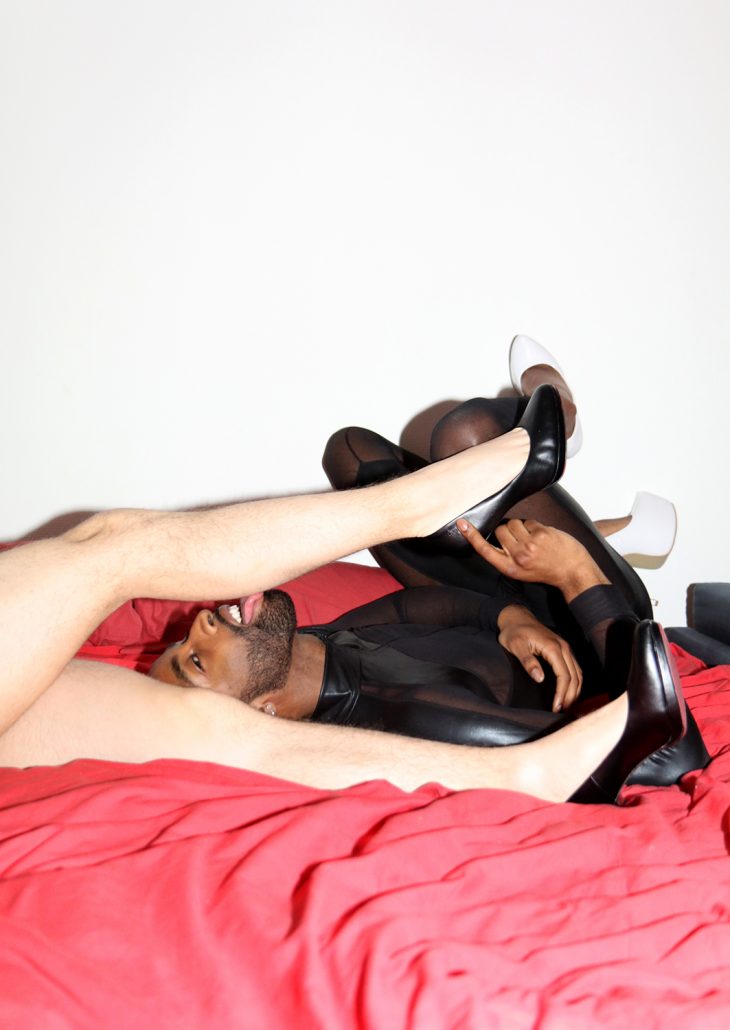
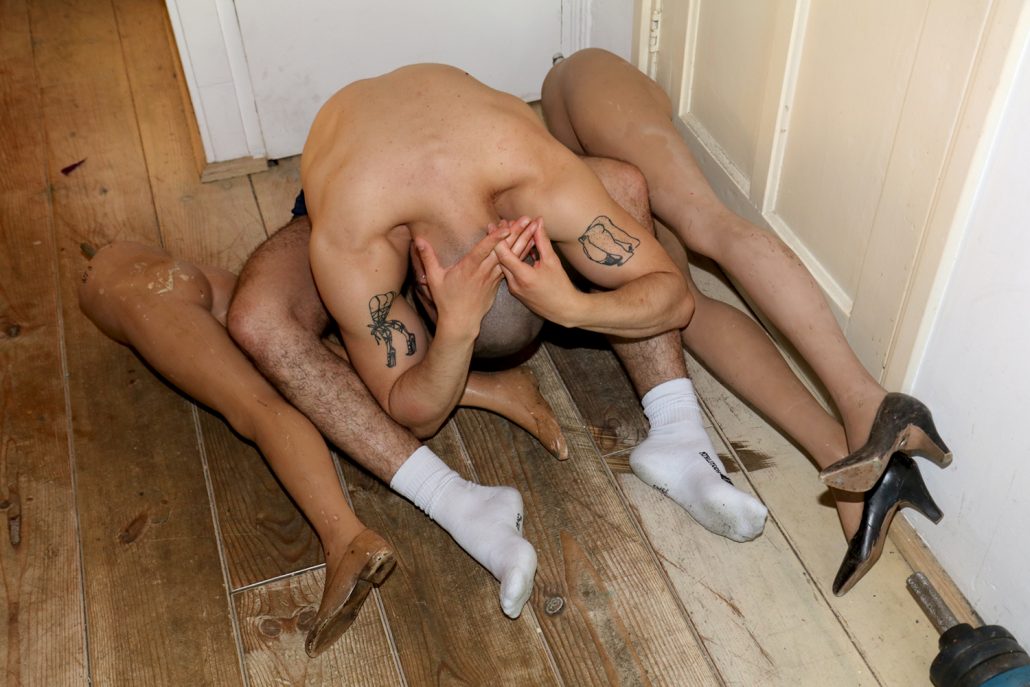
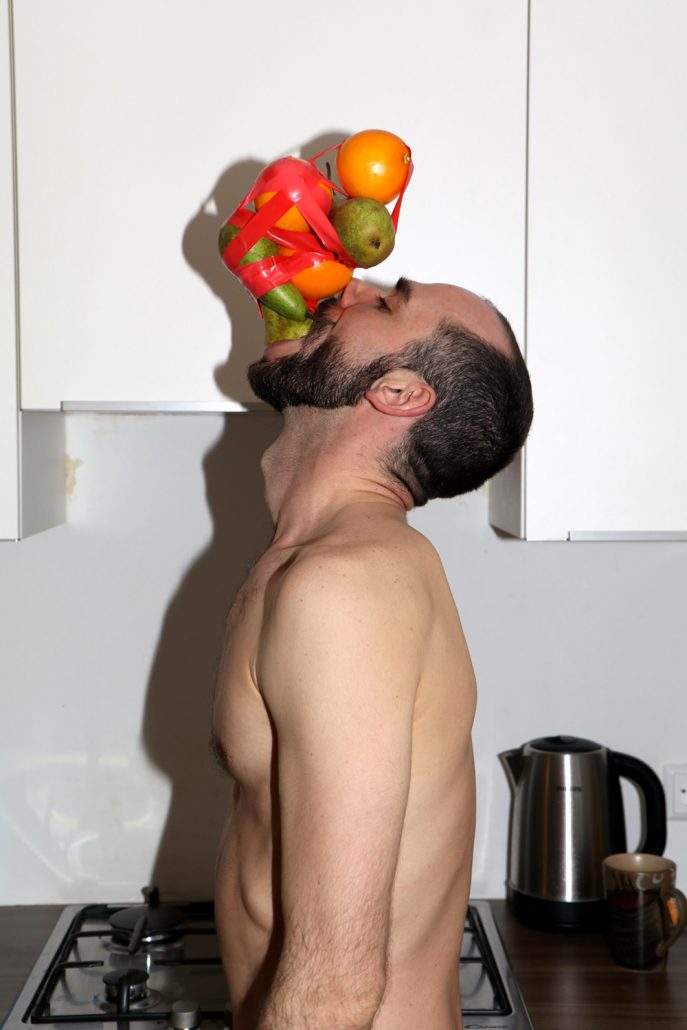
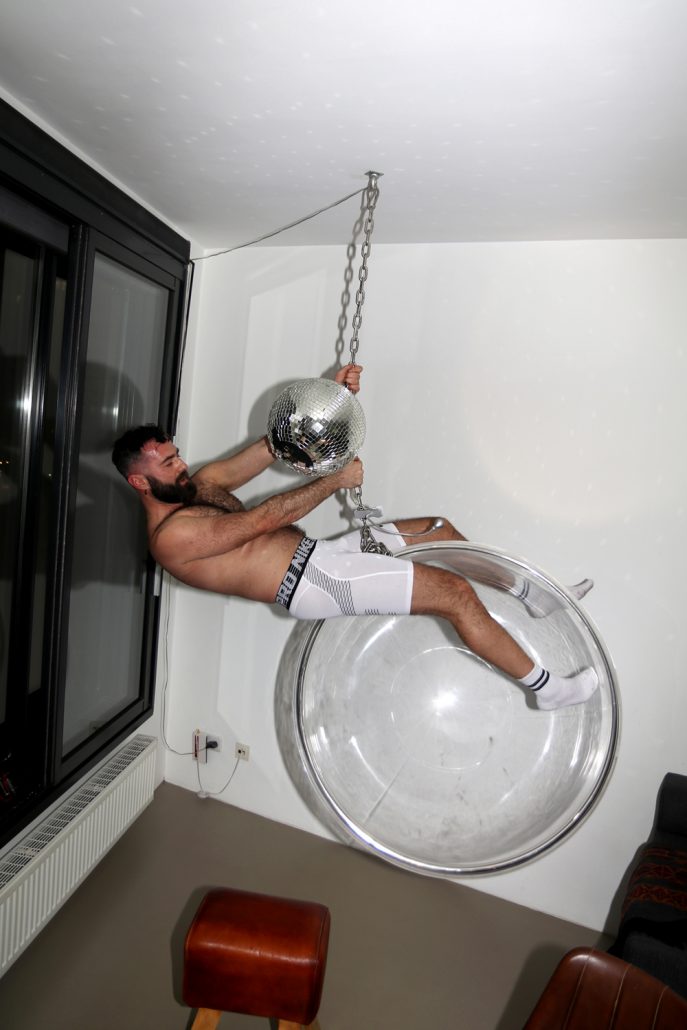
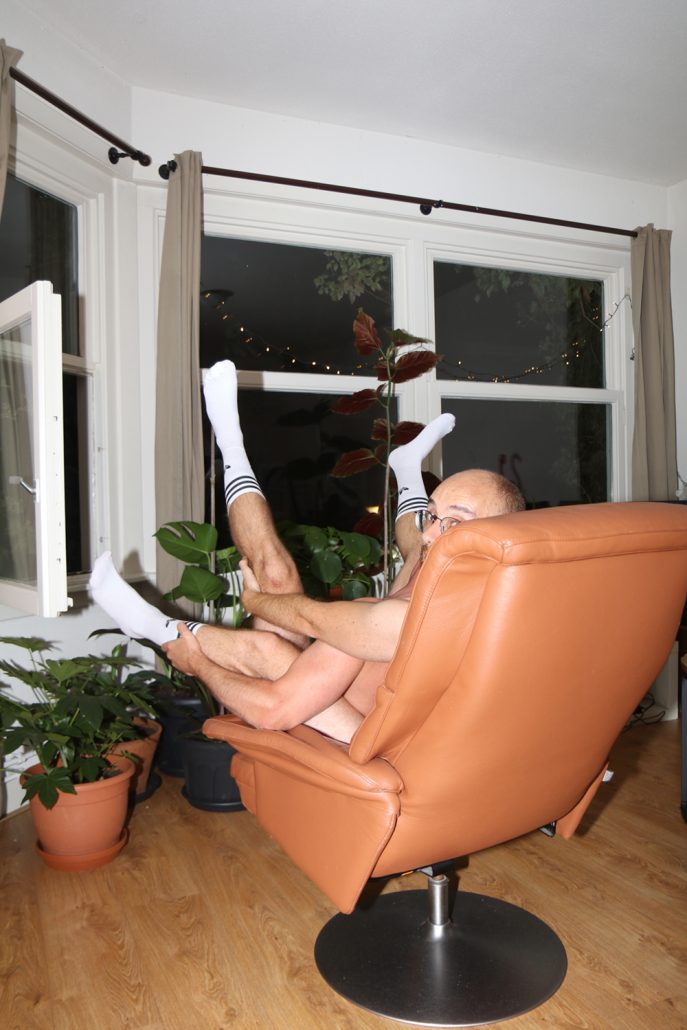
In all fairness: there was a full year between the first time we sat down for this story and the moment I was ready to put this project & the interview online. A pandemic happened. And as it turns out Anton (30, born in Kyiv, Ukraine, now living in Amsterdam with his husband, also from Ukraine) had his own journey as an artist, deciding last June: enough with the photos already.
So we got together for some beers and a follow-up talk, that I mixed in with the first.
What made you decide to take your work down?
“I had been doing it for some two or three years, sometimes you just have to finish something. It started to feel repetitive and I wasn’t enjoying it as much as I did before. There are more stories to be told, more interesting things I want to talk about and be able to expose.”
After all the effort you put into creating them: how did it feel taking those pics off?
“Good? Haha. When I started I committed myself to putting up one every day. That stopped making sense and it became three or four per week, which is still a lot. Since Summer I had hardly taken any new pictures. Covid didn’t help, but I also simply didn’t feel like picking up my camera.”
Was there an element of relief even?
“Oh yeah, definitely. You get so used to it, it’s really addictive. I felt like I was obliged to post. I might create a book later and I will put some of the pictures back up again. But at a much slower pace and mixed with images of my other projects. Which is a pragmatic choice. I’m using this Instagram page to promote my work, so it shouldn’t show me only as a guy taking pictures of guys.”
My country still doesn’t want queers to be part of its official representation. It’s in my own power to keep our stories alive”
What are you currently working on?
“I’m studying photography at the Gerrit Rietvelt Academie. One project I work on is an homage to Andrella Vodkina, a Ukrainian drag queen. She was indeed drunk a lot. An out of this world persona, super trashy and campy. She had such an interesting story, representing an older generation of early post-soviet queers. I wanted to preserve that. She died while I was doing a documentary project on her, we never got to finish it. Returning from a Kyiv gay club a police car smashed into her taxi, ignoring a red light and no blue lights on.”
What a way to go…
“Absolutely terrible. I’m so deeply sorry for her. She wanted to be popular and famous and loved. And she was, but with a very limited crowd. I want people like her to be part of my nation’s knowledge. So I set up a project in which I collaborate with drag queens who knew her personally, starting with Sletlana, who also resides in the Netherlands.”
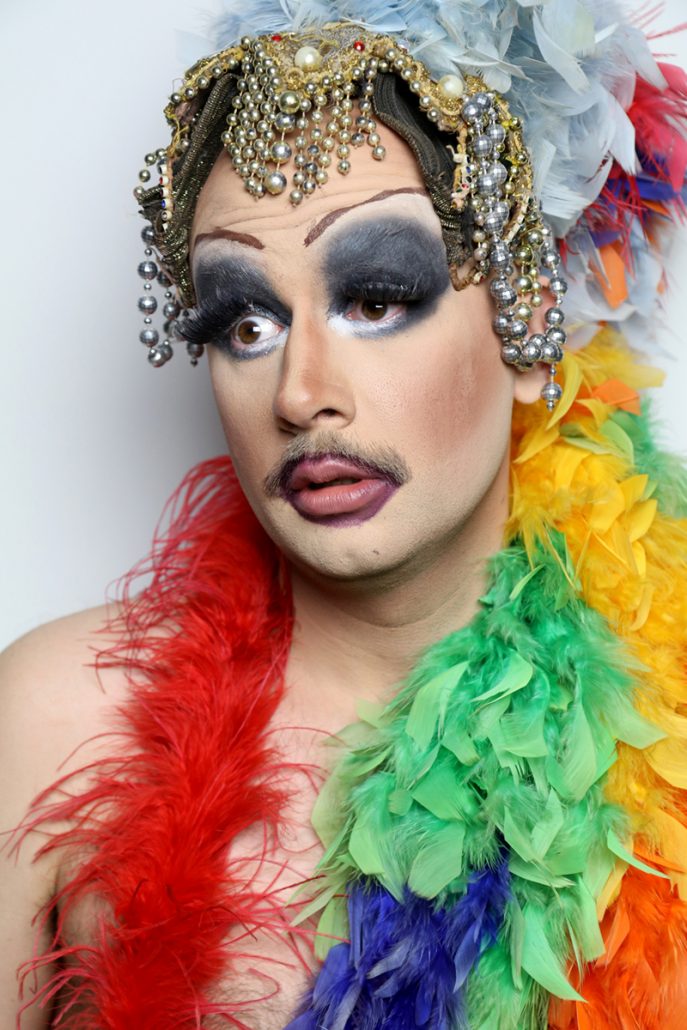
“She made Andrella’s make up on me, in a way I’m impersonating her and that’s my starting point. My country still doesn’t want queers to be part of its official representation. It’s in my own power to keep these stories alive. Someone has to do it.”
Your exhibition in Toronto (2019) opened with a wall size picture of you bleeding, taken after a homophobic attack in a Brussels metro. Why so prominently?
“Actually, the curator asked me to provide it. Maybe something in my fucked up look worked for them. This ‘daring look’ they thought I had: I was actually just a bit high.”
Tell me.
“I had just been to some techno party with a buddy. The drugs had finished but I was still floating a bit.”
The picture of me bleeding after being attacked is important but it is also beautiful”
Did it soothe the impact of the punch?
“Yea, they worked as a painkiller. It wasn’t really painful for me.”
How did you feel about having that picture up there?
“I was hesitant about it first. I didn’t want to victimize myself that way: the poor guy after a homophobic attack. The incident doesn’t define me, it’s not the only thing that’s left of me. I wanted to show something as a response to it, so the other 37 pictures in the exhibition are about celebrating life, sex and intimate moments. But of course that photo of me bleeding represents quite a serious moment. I can’t say it changed a lot but it does have an impact. I have a scar for life.”
Literally or mentally?
With some sarcasm: “Not metaphorically, not a scar in my soul. An actual scar on my head.”
(text continues)
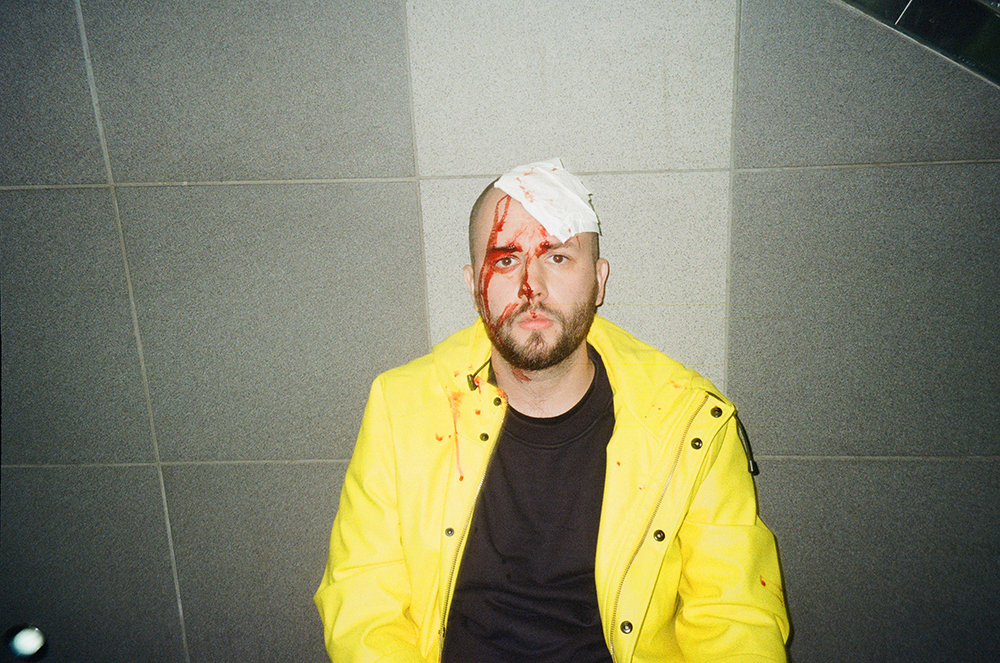
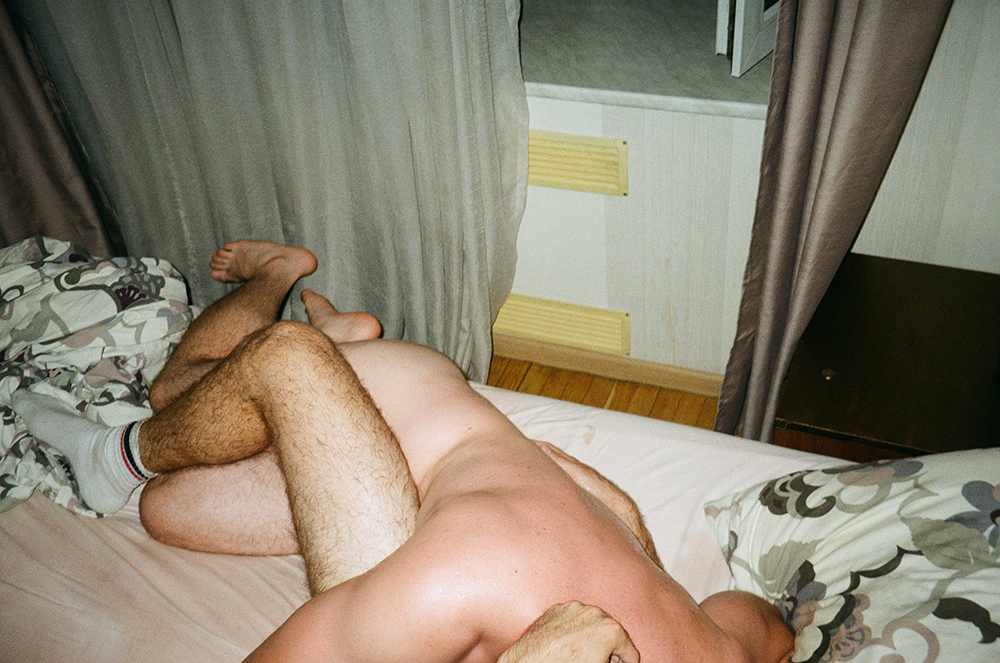
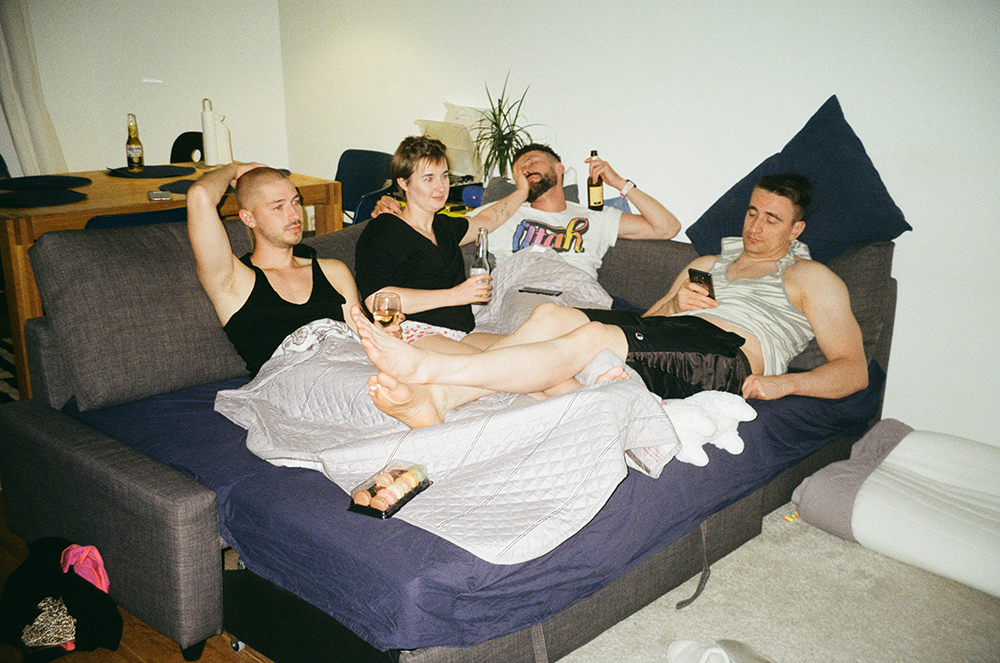
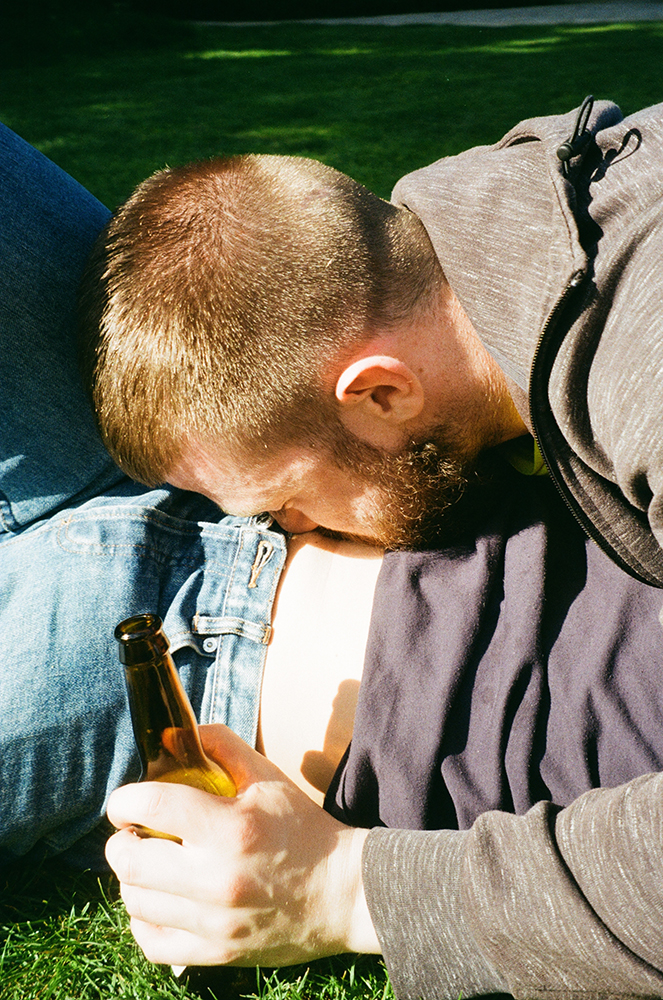
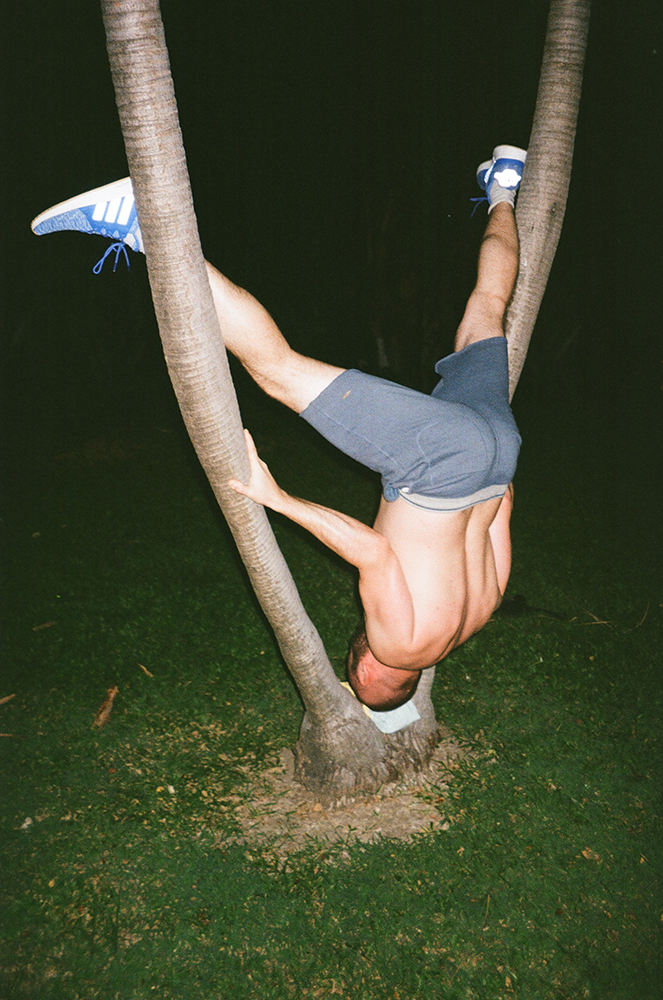
Is it just that?
“I actually don’t think about the incident a lot. I know that it happened. I know it can happen in any country in the world and it can happen for many reasons. Not only for homophobia. You look at someone the wrong way and they can kill you. We don’t live in a beautiful queer bubble and the world will maybe never be beautiful, socially, even though we have to fight for it. I’m pragmatic: something bad can happen to you.”
Does this notion make it easier for you to deal with what happened?
“Yes. It’s how it makes sense in my head. You can be killed in a second.”
Later: “Maybe, if I try to analyze why I’m not so traumatized, or think that I’m not, it’s because it was one hit only. Apparently I started bleeding right away and I think they got super freaked out when they saw the blood. It was some luck in a way. They ran. They understood: this can have consequences we don’t want to face. A guy might die, we need to run.”
The point is: this kind of violence can happen to you anywhere, not just in Ukraine”
Was it indeed a homophobic attack?
“According to my friend it was, yes. I didn’t understand what they screamed at us. My friend said they shouted ‘faggots, fuck you faggots’. So I suppose it was homophobic, right? If they are using these slurs. It happened while we were sitting together in the metro, I had my head resting on my friend’s shoulder.”
Some tired intimacy after a night out?
“Yes.”
You posted the photo on your social media accounts, captioning how you were drawn to its composition and striking colors.
“Yes. It’s an important picture but it is also beautiful.”
How did you feel when that pic was taken?
“I was bleeding and I was surprised. And people were not super helpful. I had to ask: can someone please call an ambulance? I realised I had a camera on me and asked my friend if he would take a picture of me. I thought maybe I would die and no-one will have taken a picture of it happening. That would be a miss, no? Proof of a horrible crime. Proof of real life. It’s very real when you get bumped in the head. I wanted to fixate this experience. I felt it could be important for someone to see. To maybe realize something. Or just be horrified.”
How has it affected you?
“Maybe as an artist I have become more interested in violence. Cases of violence. How they proceed, the kind of outcome they have. I’ve experienced it so I started thinking about it more. I had thought of making this a subject before, but I had this idea in my head: you cannot do a good project about homophobic violence without suffering a bit yourself. And then – bam.” With some irony: “I suffered. Now I can officially take this theme and work with it. I’m allowed.”
You’re in.
“I’m in. I cannot do a project about domestic violence towards women.”
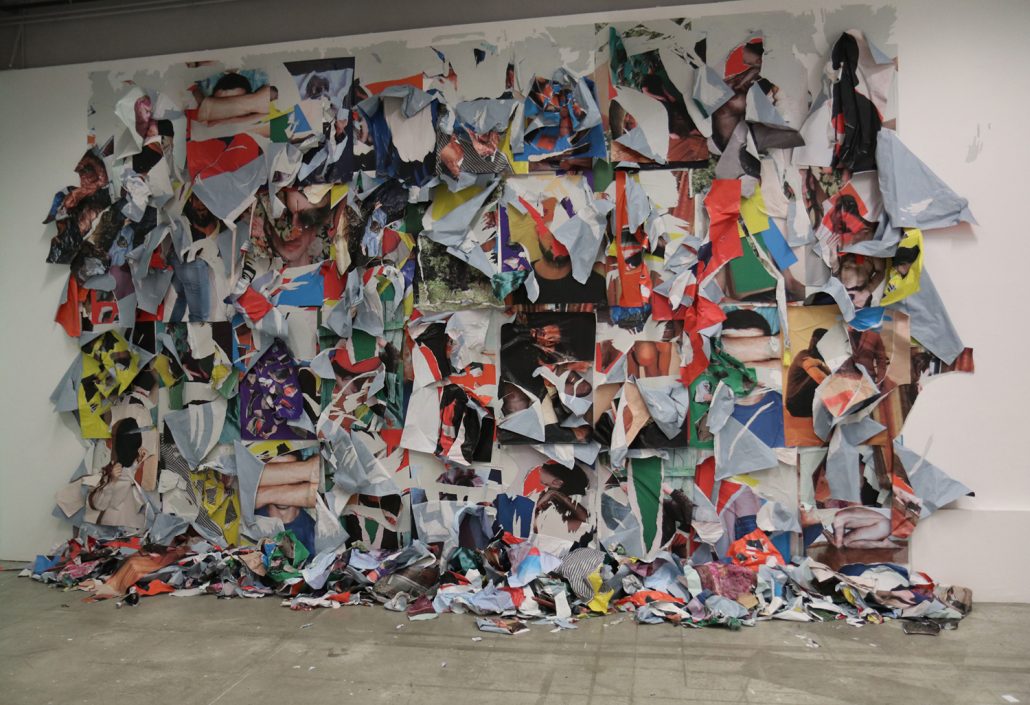
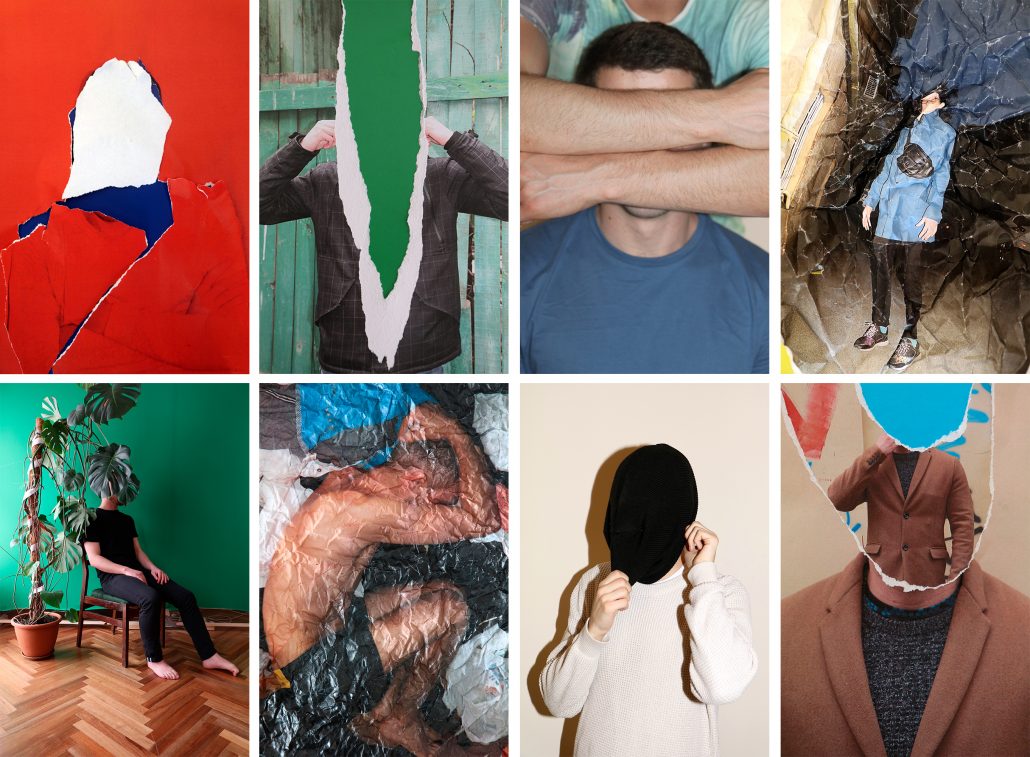
Do you think so? Is it not your position to do this if it’s not rooted in your own experience?
“It’s definitely not my stage and not my position. I think I should be silent and listen when such a topic is discussed. I would like to talk about something that is my competence.”
An insider view rather than an outsider view?
“Yes, I think it gives a better outcome.”
Kiev is fun. When you are not really sure what will happen tomorrow you become more ready to act today”
You were also verbal about this happening to you in Brussels, and not in Ukraine – your homeland with a reputation for homophobia.
“There is this Western European view that Eastern Europe is totally fucked up, that no human rights exist there. It’s bad in Ukraine for gays. Especially if you’re from a small village. Possibly you will never come out. Neo-Nazis are attacking gays, queers and everyone who they don’t like and the law enforcement doesn’t do much about it. The level of homophobia in society is slightly decreasing but still stays at overwhelming levels. Ukraine has a long way to go.”
“The point is: it doesn’t happen only there. Violence is not something from a far away zone. It’s everywhere, all the time. I read some statistics that Brussels is the safest city in Europe for LGBTI+.” He inserts an exaggerated little cough: “Well for me it’s not.”
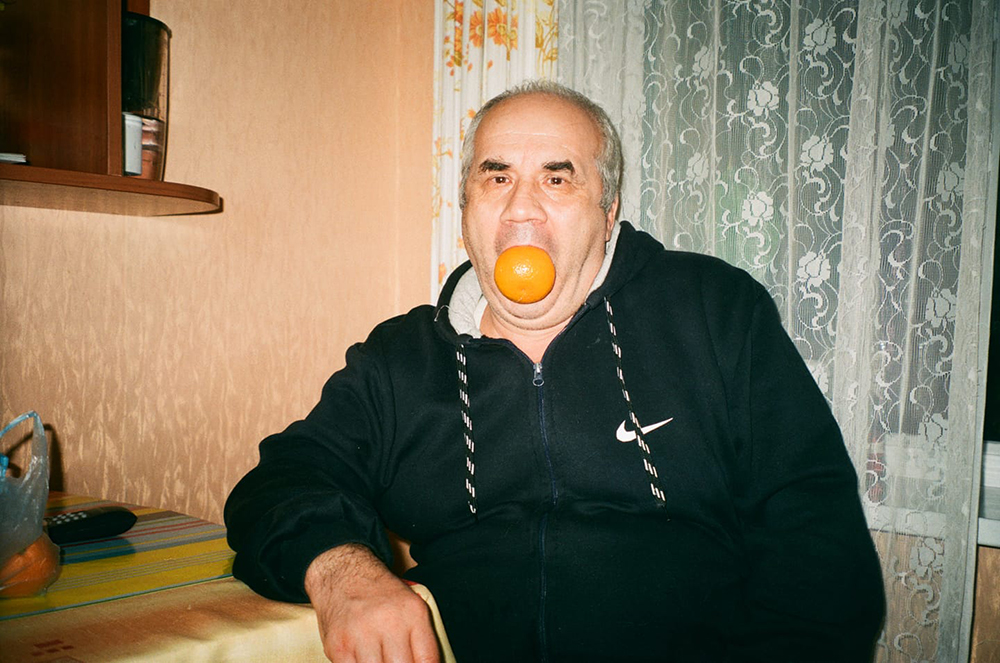
You were born in Kyiv, do you still regularly visit?
“I have family there.”
Do you like Kyiv?
“Oh, I love it. It’s much more fun than Amsterdam. Amsterdam is a bit boring for my taste, but also quite a comfortable city to live. People in Kyiv are more crazy, more fun stuff is happening. When you are not really sure what will happen tomorrow you become more ready to act today. You are more raw, in a good way. In Amsterdam everyone is calm, everything is planned. Even counter culture is organized: after closing hours you go home.”
Is there queer counter culture happing in Kiev?
“The techno scene is quite open, like everywhere. Before corona we had queer techno parties that happened regularly. There are some clubs where everyone is welcome: non binary, straight, everyone. All of this is going on, so it’s not like gays are hiding and afraid of sunlight.”
Are you out to your parents?
“To my mum officially, yes, to my father officially not. It’s a thing we don’t talk about. He definitely understands. He googles my name, he knows my instagram page. He knows the topics I work on: LGBTI+ in Ukraine. It’s out there in media, written that I’m gay. But I never talked about that to my father.”
My mom doesn’t want to have her picture up there, surrounded by all these men and penises”
How is your relationship with him?
“Meh…”
Not super close?
“No.”
There was this cute picture on your Insta of him wishing us all a happy new year with an orange in his mouth.
“I’m super proud of that picture. I did a series of him and my mom. My mom asked me not to post these photos. She doesn’t want to be up there, surrounded by all these pics of naked men and penises. But we agreed that I can use them for exhibitions and books. I really want to post them because they are amazing. And I was super happy, because the project was actually a lot about connection.”
“When I first asked my mum she said: I will never do this, don’t ever ask me. Then I came to visit her at her place during summer for a few weeks – my father was out for the first part. At some point she said: yes, we can do this. We did crazy stuff. My parents are not the kind of people to do crazy stuff, or even think crazy stuff. We were playing, the same as I would do with the guys I portray for instagram. My mom did some shots of me and my dad, he did a few of me and my mom. It felt important to give them the camera.”
How did it impact your relationship with your parents?
“I think it impacted them, it helped to loosen up a bit and also to make a bond and create new cheerful memories.”
Could you create your LGBTI+ themed art if you actually lived in the Ukraine?
“I did it. The thing is, on the bigger scale nobody gives a shit about artists in Ukraine. Well, I possible would get into trouble if I managed to find a prominent stage for a work that I did about famous non-hetero people from Ukraine. Three of these persons are featured on the Ukrainian currency. Media use these people’s stories but never mention them being lesbian bisexual, gay or queer. Which is how historical propaganda works. You choose only comfortable sides of the person, making them flat and one-dimensional.”
Ukrainian LGBTI’s are not only fighting for their own rights. We come to the defense of our country just as much”
Have any of your projects resonated in your home country?
“One of them did. I portrayed eight Ukrainian LGBTI+ soldiers. It was a response to rightwing activists claiming that there are no gays taking part in the war that is currently going on in the east of Ukraine. LGBTI+ people are not only fighting for their own rights, we come to the defense of our country just as much. I was lucky enough to find these eight people – not only men but also women and a trans man – willing to have their picture taken anonymously and committing to an interview. Then one guy decided he wanted to publicly show his face.”
(text continues)
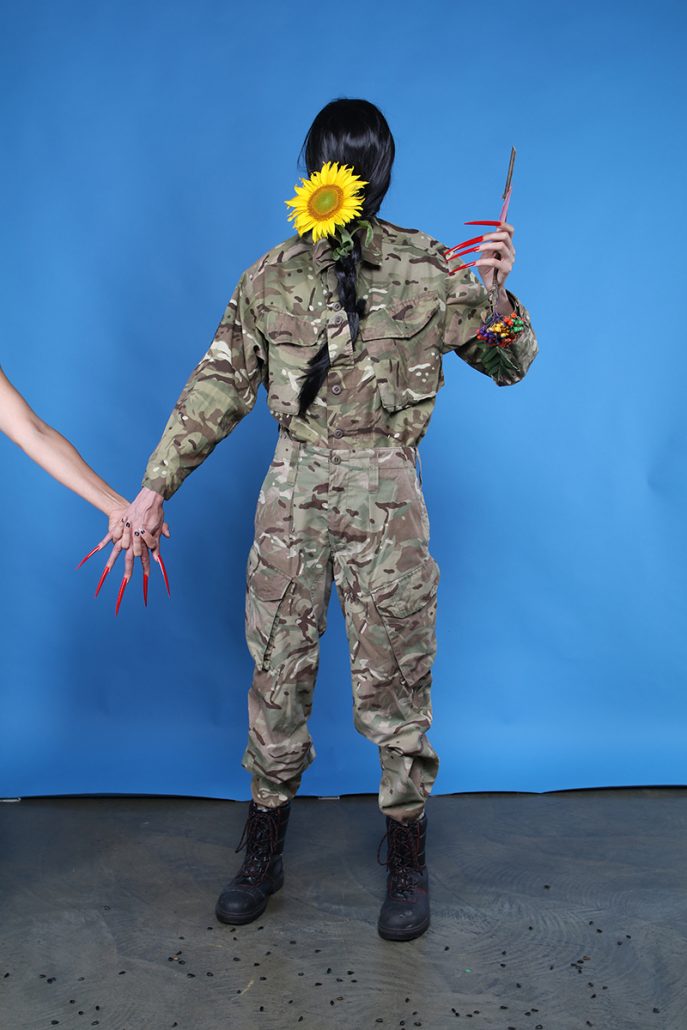
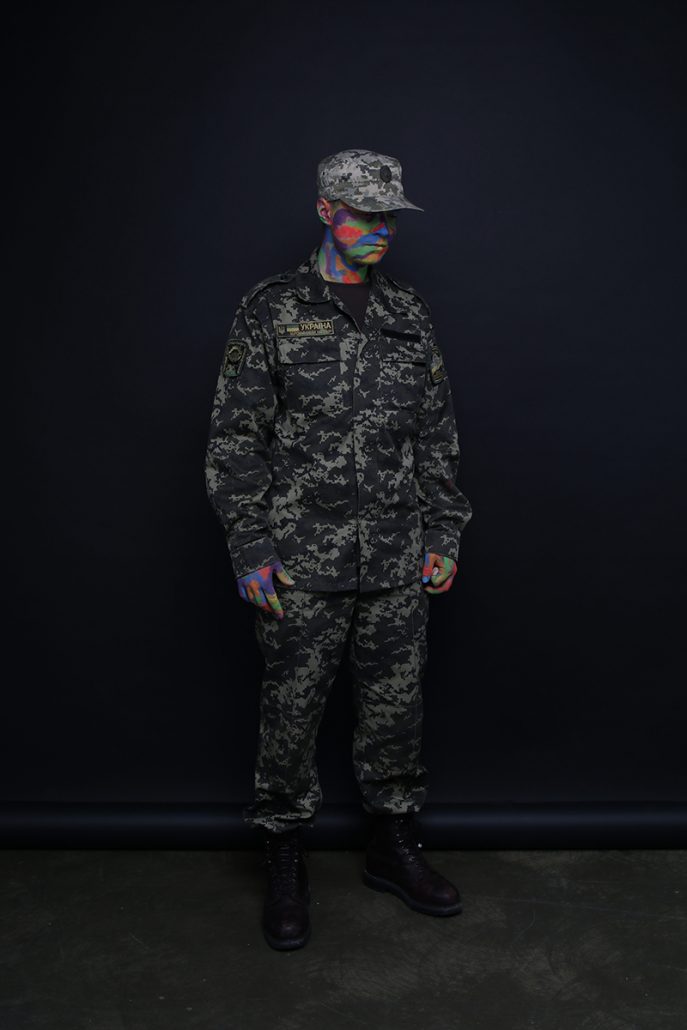
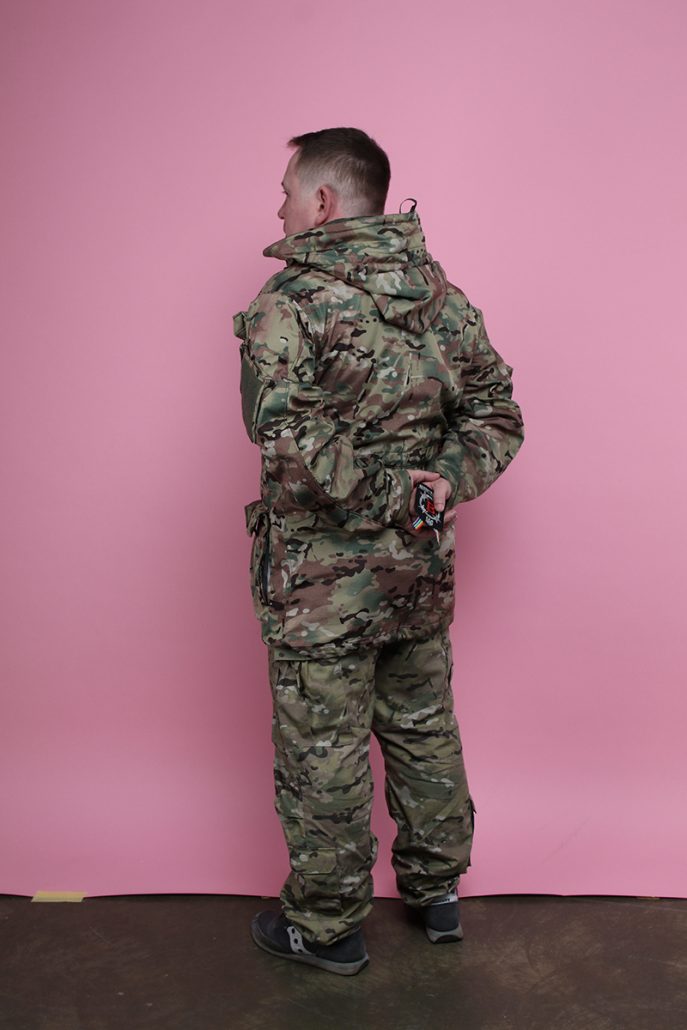
“It gained attention, articles were published in media all around the world, including BBC and Vice. The guy who came out set up a Facebook group for LGBTI+ people in the Ukraine military. It has over 1700 members. Not all of them LGBTI+ or soldiers. But a bunch of them who are, are publicly out, they became activists. This is cool, the project made some kind of a change. It resulted in a lot of hate speech, but never in anyone really threatening me, so it’s okay.”
Well, is it?
“It’s not okay, but I can live through it. I hope so. I hope I can manage that. If you touch this subject, you know it results in a shit storm in the media and online. I would feel personally attacked if the hate would come from the queer community. But if a bunch of homophobes don’t like me, yah, that’s okay.”
Browse these and other projects on anthonshebetko.com and watch his Insta page fill up again
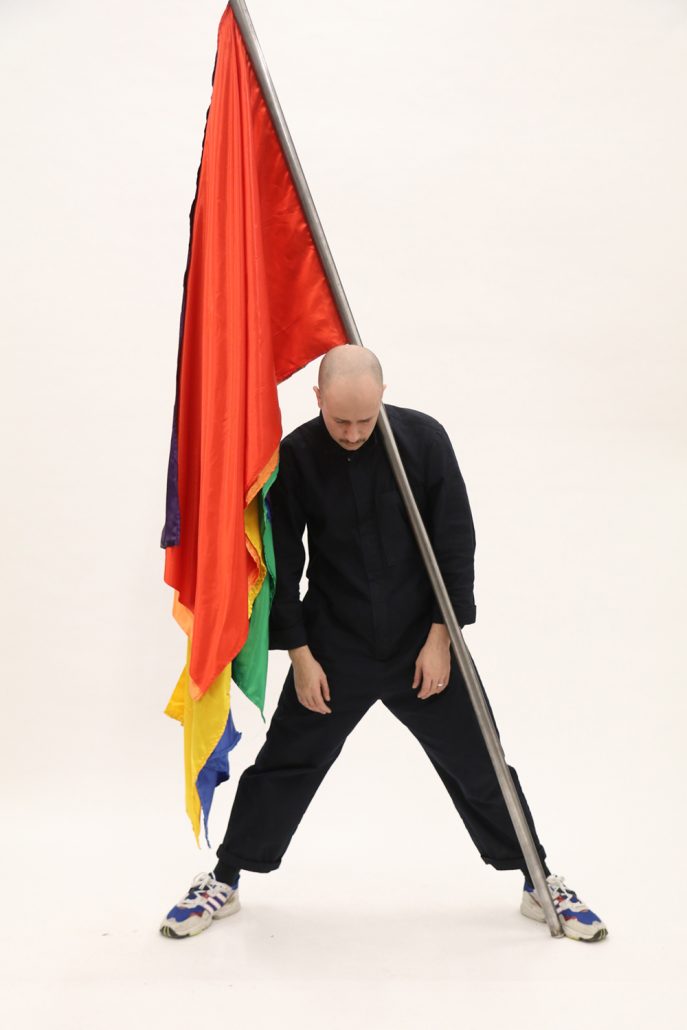
///////////////////////////////
